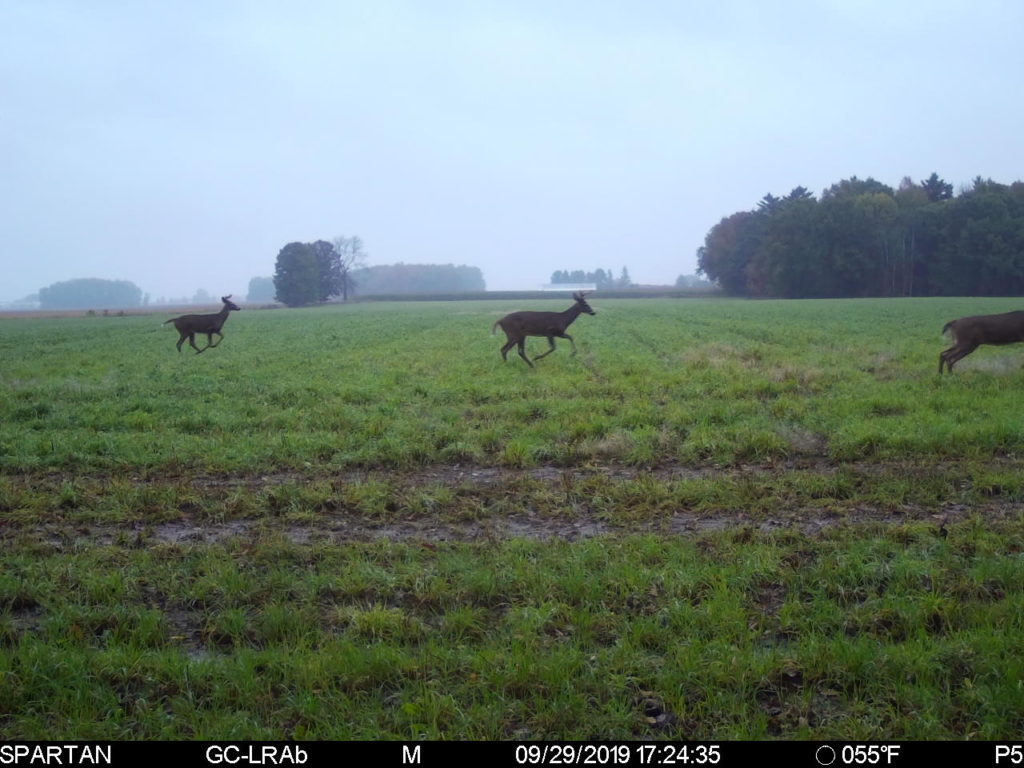Epizootic Hemorrhagic Disease Has Killed Hundreds, Possibly Thousands of Deer in Iowa

Epizootic hemorrhagic disease is brought on by a virus which causes extensive hemorrhaging of heart and lung tissue in infected deer. The Des Moines Register says EHD has been the cause of at least 773 deer – and likely even more than that, officials say.
Fortunately, humans do not need to worry about EHD because it cannot be transmitted by eating infected deer meat. However, it poses a serious threat to thin herds and has taken a toll on hunting in central Iowa.
“I’m definitely concerned,” said Jim Priebe, director of the Warren County Conservation Board.
Priebe, who calls himself an avid hunter, says he typically purchases anywhere from three to four doe tags each year. But this hunting season, he’s only buying one.
The number of deer tags sold across the state are taking a hit, Iowa Department of Natural Resources officer Richard Smith said. The DNR has sold 130,487 tags so far, compared to 143,966 at the same time last year.
Doe tag sales are lower this year too.
The DNR releases a carefully set number of doe tags every year in each county to help with population control. Yet, roughly 600 doe tags still remain from the 2,700 that were available in Warren County.
Last year, doe tags in the same county were already sold out by the start of October.
EHD vs. Bluetongue
EHD is commonly confused with bluetongue, but this is actually incorrect. Bluetongue virus is closely related to EHDV, and has similar clinical signs, but it is a different disease. Bluetongue is a serious disease that infects cattle, as well as other ruminants, and can have a significant effect on international trade. Testing at animal health laboratories is necessary to distinguish between the viruses that cause bluetongue and EHD.
Transmission
Transmission of EHD occurs by a host being bitten by a virus-carrying fly or midge.
Signs of infection
Deer may develop clinical signs in as little as seven days after exposure. In general, deer infected with EHD lose their appetite, lose their fear of people, grow weak, show excessive salivation, develop a rapid pulse, have a rapid respiration rate, show signs of a fever which include lying in bodies of water to reduce their body temperature, become unconscious, and have a blue tongue from the lack of oxygen in the blood.
The head and neck of infected deer may swell. One of the most common characteristics of deer with the chronic form of EHD is the sloughing or breaking of the hooves caused by growth interruptions. Deer with chronic EHD often become lame due to these hoof problems. Although they are ill for several weeks, they can eventually recover. Deer with the peracute form of the disease may go into shock 8–36 hours after the onset of symptoms, and are found lying dead. Death is also common in deer with acute EHD, which is generally comparable to peracute EHD and is characterized by excessive salivation, nasal discharge, and hemorrhaging of the skin
There are currently no vaccines for Epizootic hemorrhagic disease available.
You may also like
-
Preserve Wisconsin’s legacy: Renew the Knowles-Nelson Stewardship Program | Opinion
-
NRA Files Amicus Brief in Challenge to Illinois’s Public Transit Carry Ban
-
Illinois Law Acknowledges Gun Possession Doesn’t Mean Pulling the Trigger
-
80 Years of Wisconsin Deer Hunting Experience
-
Outdoor people, County Vision Outdoorsmen Expo will be on Feb. 8th at the Manitowoc County Expo Grounds.


